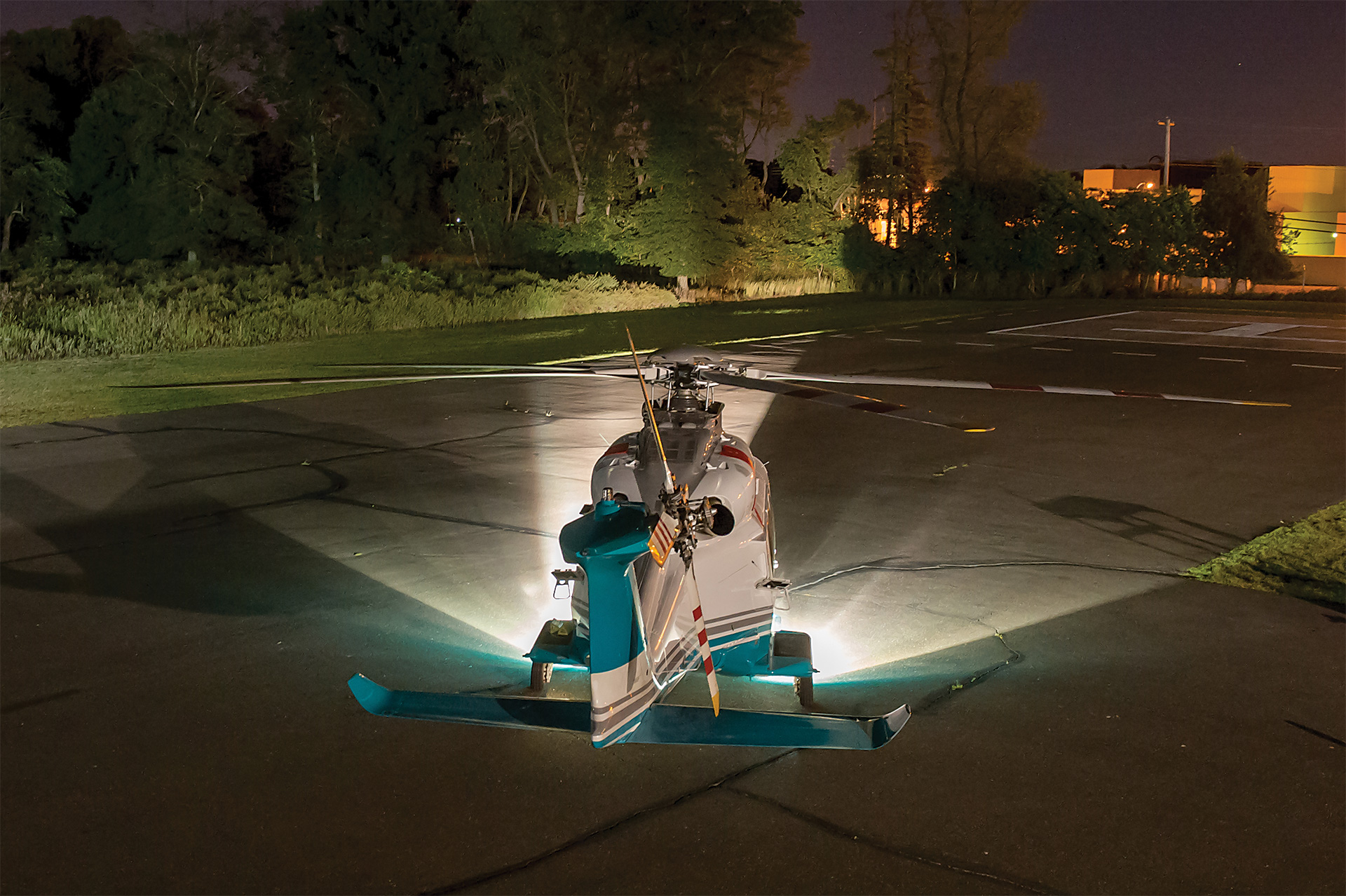The Whelen Engineering name has been synonymous with aviation lighting for 70 years. It started when George W. Whelen III invented the industry’s first rotating aircraft anti-collision beacon in his garage in Deep River, Connecticut, and founded Whelen Engineering in 1952.
Thirty-nine years later, Roy LoPresti, an aeronautical engineer and ex-U.S. Air Force pilot, founded LoPresti Aviation in Sebastian, Florida.
In February 2019, Whelen Engineering acquired LoPresti Aviation, and Whelen Aerospace Technologies (WAT) was born. The acquisition strengthened an already solid platform to continue developing innovative aviation lighting on a global scale.
WAT combined the strengths of both companies to design, engineer, and manufacture a diversified and innovative product line for customers in both fixed-wing and rotorcraft markets. The two made a near-perfect blend.
“Both companies are leaders in their respective markets,” said Jeff Argersinger, director of sales who has been with Whelen for 39 years. “The LoPresti HID [high intensity discharge] product line allowed for a high-end, high-performance product offering to the existing Whelen product line.”
The additional market for part 25 aircraft offerings allowed for not only anti-collision/position light upgrades, but landing and taxi light upgrades, he added. Whelen had spotted the opportunity for such a marriage.
“Over the years, aviation lighting has been very utilitarian,” Argersinger explained. “The main goal, first and foremost, is to meet the U.S. Federal Aviation Administration [FAA] requirements for the intended function. Aesthetics becomes a secondary goal provided it does not interfere with the performance of the product.”
But Whelen reckons aesthetics shouldn’t be ignored in the aircraft lighting market. For example, Cirrus Aircraft has been setting new standards in general aviation with its progressive thinking and approach compared to historical aviation platforms that have remained unchanged for many years.
“WAT and Cirrus collaborated on an integrated design where all of the position and anti-collision lights were integrated within the wingtip in a very thin, sleek profile,” Argersinger said.
The result was the Spectra. Another added feature within the Spectra wingtip was the halo light.
“Very similar to the automotive headlight halo, it brought a new signature automotive feature that was never before seen in aviation,” Argersinger said. “The Spectra took utilitarian ‘must have’ lighting to a new level and made it a signature feature of the aircraft.”
But it’s not all about aesthetics. Utilizing LED (light emitting diode) technology, WAT’s wide range of product offerings for the rotorcraft market allow for significant improvements in performance and reliability never before attainable with legacy products using aging traditional technology.
Rotorcraft are primarily working platforms that benefit from increased dispatch reliability. WAT’s extensive line of FAA-approved LED anti-collision, position and landing/taxi lights are proven performers.
During design, WAT takes care to employ products that are backward-compatible to legacy products, allowing for simple installation with minimal disruption, such as using existing mounting and wiring, and offering weight reduction through elimination of the need for strobe power supplies.
Moreover, the robust WAT designs provide improved dispatch reliability and safety of flight. Recognized by the world’s leading helicopter manufacturers, WAT products are currently original equipment on the majority of new rotorcraft platforms. WAT’s global reseller network provides product in stock ready to ship, and the WAT factory sales and customer service team offers direct customer support.
As an FAA-approved production holder, WAT owns hundreds of supplemental type certificates (STCs) for aircraft landing, taxi, anti-collision, and position lights. Its design engineers work closely with original equipment manufacturers and service provider networks to design high-performance products. As well, its in-house composite shop produces a wide variety of STC- and PMA-approved speed modifications for a number of general aviation aircraft.
Continued innovation constantly improves performance. An example to illustrate: WAT/Whelen has been providing LED landing and taxi lights in the Parmetheus family for more than 12 years with well over 100,000 sold and in operation globally. But they are always making a good thing even better.
“Our team of engineers has taken a proven winner in the Parmetheus Plus product and made it 2.5 times brighter with the new Parmetheus G3 Series,” Argersinger said. “It is quite simply the best performing product — not only in its price range, but it outperforms competing products costing two or three times as much.”
It is available in both landing and taxi PAR-36 versions, with a PAR-46 version expected this year.
Never a company to rest with the status quo, WAT keeps a close eye on industry trends and spotting opportunities to lead development of potential new aviation lighting products.
“There are several captivating innovative projects currently in work that will take lighting to the next level,” Argersinger said. “As LED technology advances, we see designs being smaller with added performance, or the addition of added features within current product geometry. One thing for sure, the future looks bright for WAT lighting products.”





